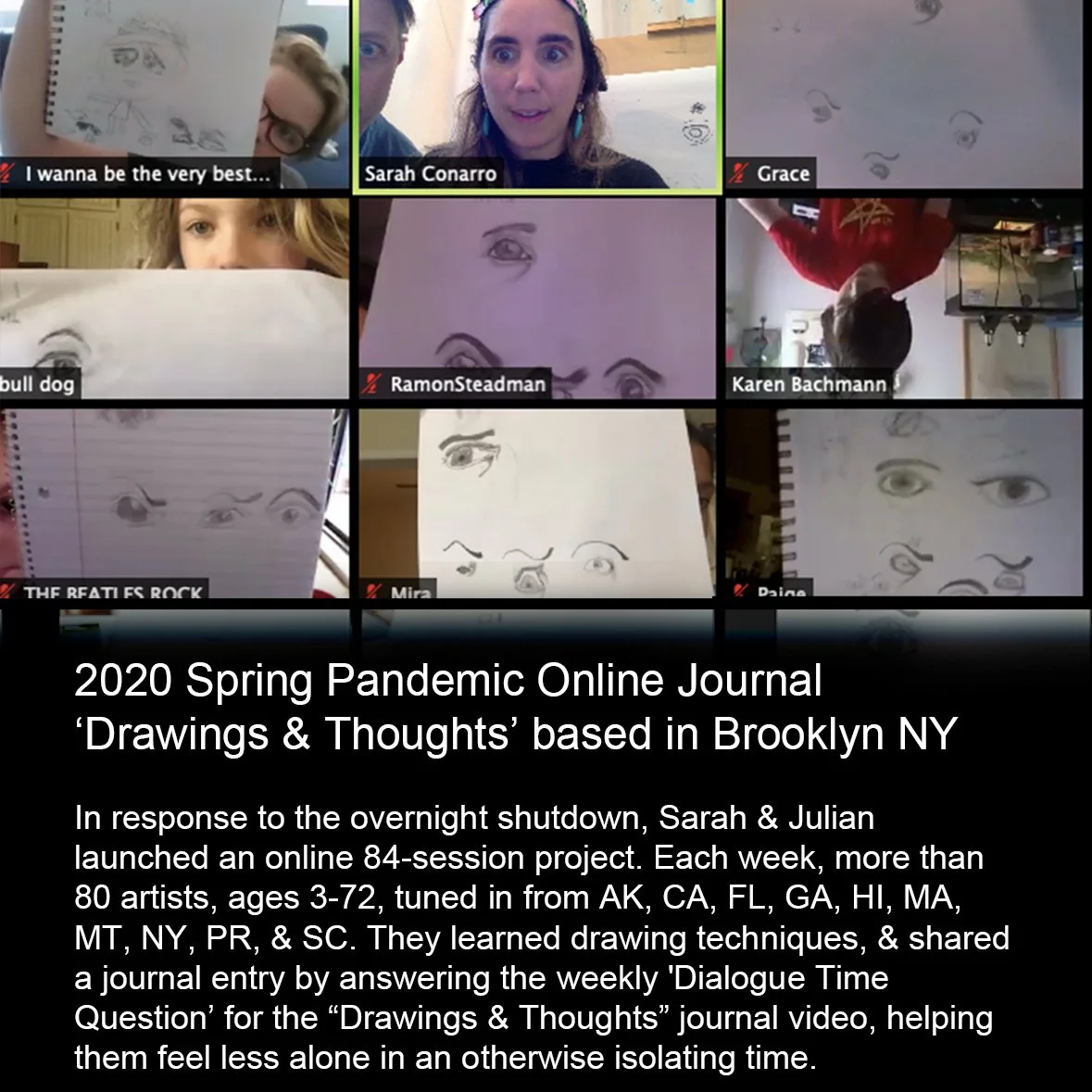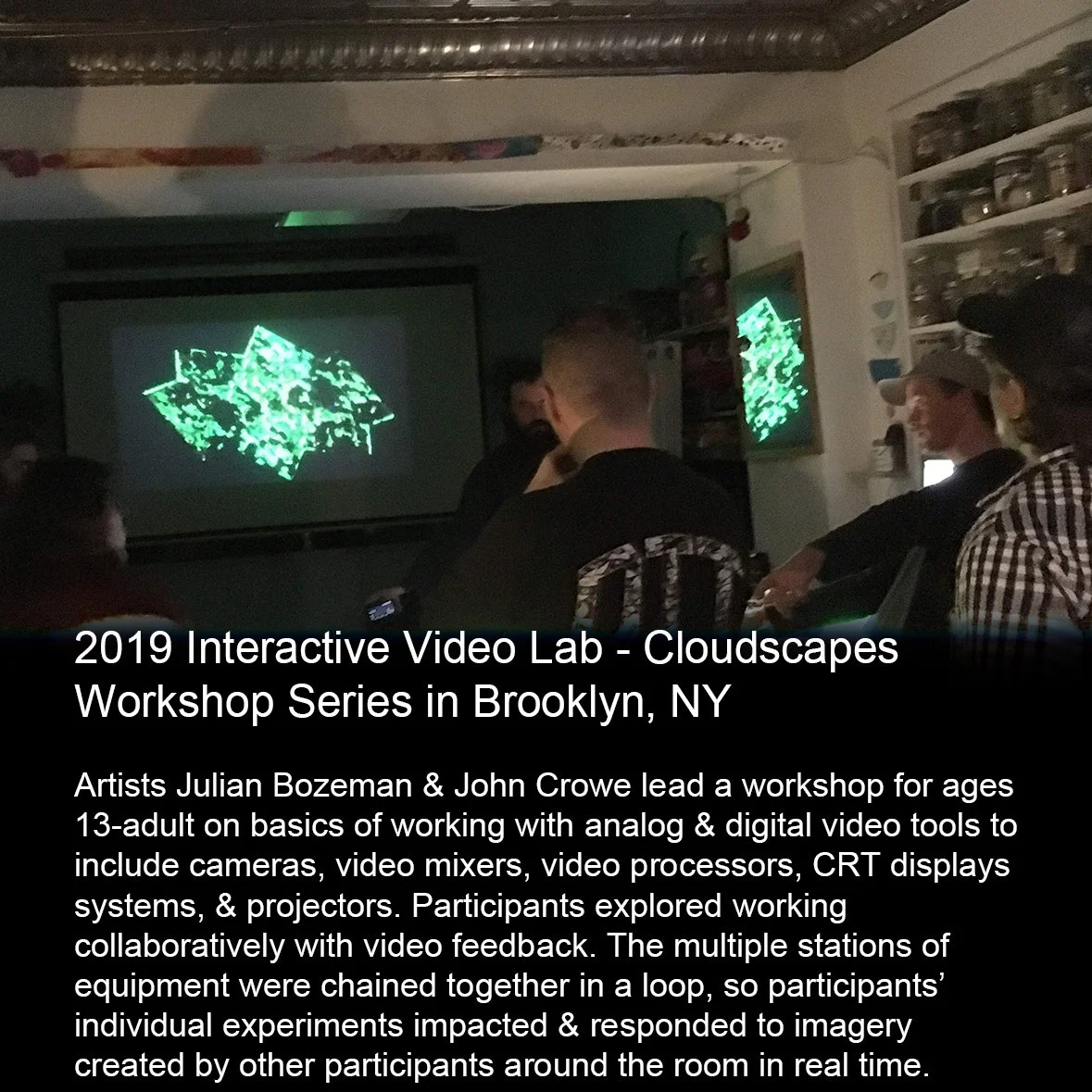Community Workshops / Projects
Our community-based work brings people together through collaborative art-making rooted in process, place, and shared experience. Whether held in a garden, shelter, library, or public space, these workshops are shaped by who’s present and what the moment calls for—sometimes quiet and reflective, sometimes loud and playful.
Projects may take the form of zines, printmaking, collaborative paintings, sound experiments, or digital storytelling. What stays consistent is our approach: to offer accessible entry points into art-making, use everyday materials alongside traditional tools, and create space for participants to work both individually and collectively.
Begin with listening to community voices and needs
Create collaborative artistic processes accessible to diverse participants
Build relationships through shared creative experiences
Result in meaningful artistic work that reflects collective vision
Designed to be flexible—ranging from one-time events to multi-week partnerships
Center experimentation, discovery, and process over final product
Reflect the unique voices and perspectives of those who participate
Create tangible takeaways or shared works that can live in the community
Our aim is not to teach a fixed method but to hold space for creative contribution—so that those involved, no matter their background or experience, can see themselves in the work that’s made together.
Curriculum Design
Our curriculum approach bridges structured skill-building with open-ended exploration, emphasizing tools, vocabulary, and meaningful context for K–12 students. Each curriculum we design reflects our belief that technical skills flourish when students feel personally connected to their creative work and can relate it to their own experiences. Additionally, we partner with schools and organizations to co-develop curriculum that is responsive to the unique needs of each community. Our curriculum work includes:
Original Curriculum:
When running independent projects, we use Consider Community Concepts™ as teaching objectives, encouraging students to engage with their physical, cultural, and social surroundings. Lessons are written in a formal plan format with clear objectives, materials, and accessibility notes—ready to implement, share, and adapt.
School & Community Implementation:
Our curriculum can be brought directly into schools and community settings without additional planning or support from host educators. These ready-to-use units integrate with various classroom goals and age groups, while centering student experience and creative agency.
Collaborative Curriculum Development:
We partner with schools and organizations to co-develop curriculum tailored to specific learning goals and community contexts. This includes aligning with academic standards, centering local knowledge and identities, and co-planning with educators to ensure accessibility and relevance.
Teaching and Learning Objectives Across All Approaches:
Supporting educators in aligning academic goals with arts-based learning
Using assessment models that prioritize reflection, experimentation, and growth
Offering adaptable structures that respond to student needs
Our work is grounded in real-world practice, from district-wide initiatives to classroom projects. Sarah authored the first arts curriculum for the Lower Kuskokwim School District in Western Alaska, while Julian introduced video mapping in schools across Juneau as part of project-based learning. Together, they’ve created curriculum centered on place, identity, and voice, and most recently co-developed visual and media arts curriculum with the NYC Department of Education, integrating core content with language development.
We partner with educators to co-develop arts-integrated learning experiences that engage students across disciplines, fostering both creative development and academic achievement. Arts-integrated learning combines artistic practices—visual arts, music, video—with academic subjects, enriching students' understanding of concepts through hands-on creative work. In our project-based learning model, students engage in sustained, multi-week or multi-month projects that build toward meaningful culminating events or artifacts. These projects provide real-world connections and empower students to see the impact of their work.
Design culturally responsive curricula that weave artistic practices with academic content in meaningful ways.
Foster critical thinking and creative problem-solving through hands-on artistic exploration, enabling students to make connections across disciplines.
Integrate place-based learning, connecting students with local environments and community contexts through creative projects.
Enhance literacy and language development by integrating visual, musical, and media expression into core learning.
Create multiple entry points for diverse learners, accommodating different learning styles and providing inclusive approaches to learning.
Projects often explore themes such as identity, social justice, environmental stewardship, cultural heritage, and community narratives. Each integrated project is carefully designed alongside educators to meet specific curricular goals while creating space for student voice and authentic artistic exploration.
Arts-Integrated Curriculum & Project-based Learning
We partner with educators to co-develop arts-integrated learning experiences that engage students across disciplines, fostering both creative development and academic achievement. Arts-integrated learning combines artistic practices—visual arts, music, video—with academic subjects, enriching students' understanding of concepts through hands-on creative work. In our project-based learning model, students engage in sustained, multi-week or multi-month projects that build toward meaningful culminating events or artifacts. These projects provide real-world connections and empower students to see the impact of their work.
Design culturally responsive curricula that weave artistic practices with academic content in meaningful ways.
Foster critical thinking and creative problem-solving through hands-on artistic exploration, enabling students to make connections across disciplines.
Integrate place-based learning, connecting students with local environments and community contexts through creative projects.
Enhance literacy and language development by integrating visual, musical, and media expression into core learning.
Create multiple entry points for diverse learners, accommodating different learning styles and providing inclusive approaches to learning.
Projects often explore themes such as identity, social justice, environmental stewardship, cultural heritage, and community narratives. Each integrated project is carefully designed alongside educators to meet specific curricular goals while creating space for student voice and authentic artistic exploration.















